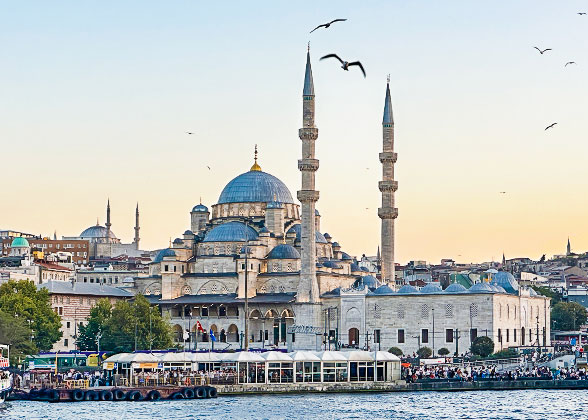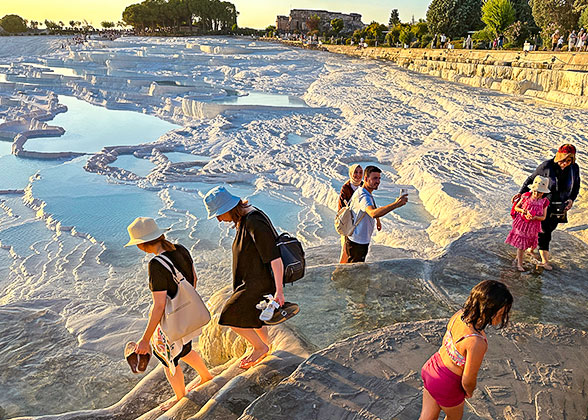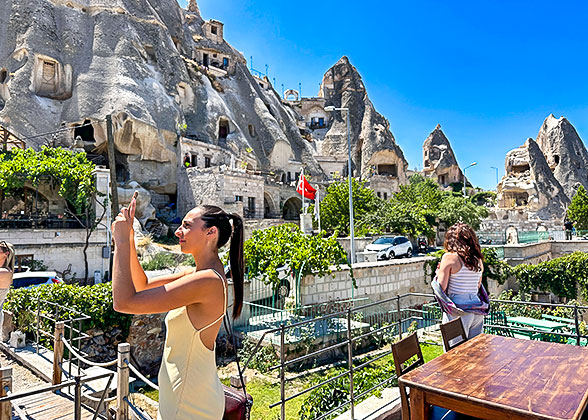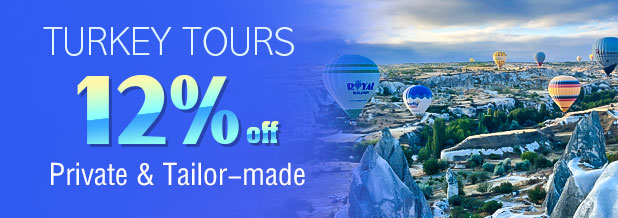Turkey Travel Guide
Basic Facts of Turkey

Famous Blue Mosque
|
Area: 783,356 square meters (302,455 square miles)
Population: 81 million
Language: Turkish
Currency: Turkish lira (TRY)
Time Zone: UTC+3
Capital: Ankara
Administrative Division: 81 provinces
Religions and Beliefs: Islam (>82%)
Turkey Videos
Turkey Photos
Top Things to Do in Turkey
As one of the top 10 tourist destinations in the world, Turkey, which connects Asia and Europe, is an ideal land to experience both eastern and western cultures. Among the 7 Wonders of the Ancient World, Turkey has got two, namely Temple of Artemis at Ephesus and Mausoleum at Halicarnassus. Encircled by three popular seas, namely the Mediterranean Sea, the Aegean Sea and the Black Sea, Turkey is a country people shall never miss if they love seas. Walking on the beaches of south and west coast of Turkey, it is not hard to find historical relics from ancient Greece, Rome and even relics of Christian civilization. To make the first trip there easier, here are some helpful recommendations.Top destinations
1. Istanbul: Blue Mosque, Aya Sofya, Strait of Bosporus, Basilica Cistern, Topkapi Palace, Suleymaniye Mosque2. Cappadocia: Göreme, Goreme Open-Air Museum, Devrent Valley
3. Pamukkale: Pamukkale Thermal Pools, Hierapolis
4. Antalya: Kaleici, Aspendos, Antalya Archeological Museum
5. Temple of Artemis at Ephesus
Top activities
the best hot-air balloon travel in Göreme, hot spring bath in Pamukkale Thermal Pools, Turkey bath, exciting paragliding in Fethiye…

Hot Air Balloon Rides
|
Best Time to Visit Turkey
April, May, September and October are the best months for land tours in Turkey. The weather is not too hot nor too cold with the average temperature from 12℃ to 21℃(54°F - 70°F). For beach and swimming, it’s better to visit from mid-May to September on the beach of the Mediterranean Sea and the Aegean Sea. To travel in east Turkey, end of June to September is quite a comfortable period. The food and accommodation cost is higher during peak seasons from July to September. As for clothes, wind coat, light jacket and T-shirt are practical choices during the best travel months including April, May, September and October.
 See more: Turkey Weather
See more: Turkey Weather

Aya Sofya in Istanbul
|
Transportation
The prior way of arriving at Turkey is by plane. There are direct flights to Istanbul from Beijing, Shanghai, New York, London, Paris, Moscow as well as major cities of most countries. For travelling inside Turkey, train and bus are top choices. Train ticket is as cheap as half of bus ticket for the same distance, but the train network barely covers coastal areas. The intercity bus system is almost the best in all countries for its dense frequency, reasonable pricing and good facilities. Other alternative ways are rental car, subway, ship, taxi and dolmus with special routes.

Local Tram on Taksim Square, Istanbul
|
Turkey Travel Tips
Turkey is a typical Islamic country. In Turkey, people show respect to old people and privileged person. Before entering a mosque, it is necessary to take off shoes. When visiting the top of the mosque, people must put shoes on. Intimate friends will kiss left and then right cheek when they meet. General friends just shake hands. It is a custom to take off shoes when visiting someone’s home. It is quite impolite to hug the lover in public.History

Fairy Chimneys in Pasabag, Cappadocia
|





